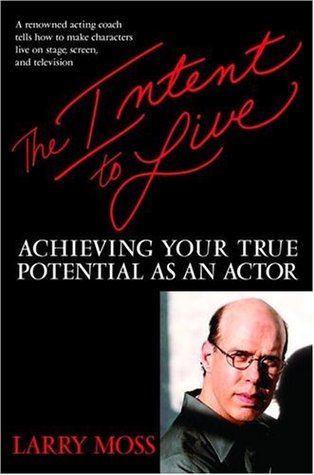More on this book
Kindle Notes & Highlights
by
Larry Moss
Read between
January 4 - May 30, 2019
This technique will help you discover unique active
intentions and different nuances and tones for a scene rather than settling for choices that are mundane.
choosing one active verb that you think is right for ...
This highlight has been truncated due to consecutive passage length restrictions.
then find all the sy...
This highlight has been truncated due to consecutive passage length restrictions.
the thesaurus for ...
This highlight has been truncated due to consecutive passage length restrictions.
try out the dialogue as one by one you play the differ...
This highlight has been truncated due to consecutive passage length restrictions.
This is what the Van Gogh fence is about: all the different tones of color you can choose from to bring something to life.
your character’s stakes.
As you explore a script, ask yourself, how far would my character go to achieve their
goals?
film Lady Sings the Blues
Plaza Suite,
See how fate dealt this boy the heartbreaking blow
of his parents’ divorce followed by his mother’s death. Imagine yourself going through that and then being watched by the
world to see if you measure up. You’ll have more comp...
This highlight has been truncated due to consecutive passage length restrictions.
Private Lives,
Affliction,
Streetcar
Named Desire.
We in the audience have to feel that we’re watching a life being lived in
front of us.
The Grifters
Tootsie
superobjective, obstacle, and intention.
an objective is what you want and an intention is how you get it. But
internal life
cellular resonance.
Inner imagery is the thing that makes the audience plug in to their own unconscious.
Tennessee Williams’s play Sweet Bird of
Youth,
Angela’s Ashes,
Winterset,
Winterset
When I was four years old we climbed through an iron gate, my mother and I,
to see my father in prison. He stood in the death-cell and put his
The actor’s job in performance is to send
the ideas to this young woman, and because you’ve created and worked on the inner imagery as though you’ve actually
experienced it, your eyes will play the movie and she will read that and it will be an ...
This highlight has been truncated due to consecutive passage length restrictions.
In performance, you don’t do an acting exercise to call up inner imagery,
you play the intention to achieve your objective.
you build your inner imagery and it’s there. Just as in life when you say “I went bowling with my friends last night and we had a blast,” you don’t first stop and say to yourself Oh, now I’m going to think about
that experience of bowling. You’ve lived it, so all you’ve got to do is say “I went bowling last night with my friends and
had a b...
This highlight has been truncated due to consecutive passage length restrictions.
If a play or film requires you to have a reaction of
grief or shock or hysteria and nothing in the script provokes you to this intense emotion, an “as if” will solve the
pro...
This highlight has been truncated due to consecutive passage length restrictions.
You can’t
stay clean and tidy and be an actor. You’ve got to use imagery of things that upset you, things that make you laugh, things
that arouse you sexually, things that crash through ...
This highlight has been truncated due to consecutive passage length restrictions.
you either have to create from your imagination the imagery that the writer gives you, make that real and


